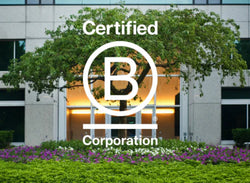
Introduction
It is estimated that over 1.1 million older adults (>65 years) in the UK are malnourished or are at risk of malnutrition.1 To coincide with Malnutrition Awareness Week (5-12 October 2020), this blog post will discuss nutrition risk screening tools which could be used remotely with older adults and/or vulnerable people who are shielding at home.
Malnutrition Risk Screening
Nutritional screening is a simple process which is used to identify patients at risk of malnutrition. National guidance (NICE) recommends that malnutrition risk screening should be carried out by trained health professionals. All hospital inpatients and people in care homes should be screened on admission, then further when there is clinical concern. For people residing in the community, screening should take place on initial registration at general practice surgeries and when there is clinical concern.2
Malnutrition risk screening tools should be practical, economical, reliable, valid and evidence-based.3 They should incorporate a scoring system that is applicable to different clinical conditions and care settings, which can be linked to a care plan.4 Most screening tools utilise a variety of variables including recent weight loss (percentage), food intake/appetite and body weight and height (anthropometric) measures.
Screening tools specific to the older adult population include:
- Malnutrition Universal Screening Tool (MUST)5
- Malnutrition Screening Tool (MST)6
- Nutritional Risk Screening - 2002 (NRS)4
- Mini Nutritional Assessment (MNA-SF)7
- BAPEN Malnutrition self-screening tool
- The Short Nutritional Assessment Questionnaire (SNAQ)8
- The Patients Association Nutrition Checklist
Recent COVID-19 shielding restrictions have presented significant challenges for healthcare professionals (HCPs) involved in nutrition risk screening. Some of these tools (such as MUST, MNA-SF, NRS, BAPEN tool) require the HCP to obtain accurate anthropometric measurements. Physically conducting these measurements may not be practical or feasible due to social distancing measures. For example, the Malnutrition Universal Screening Tool (MUST) (a frequently used screening tool) requires objective parameters such as height and weight to determine Body Mass Index (BMI) and percent weight loss over time.9
In some cases, BMI can be estimated using alternative measures such as ulnar length and mid upper arm circumference (MUAC).10 However, these measurements may not be possible due to local infection policies and COVID restrictions.11 Plus, obtaining these measurements could be difficult for somebody without previous training or experience.
Remote screening tools have been explored for use with patients when close contact is not feasible or safe. It has been proposed that carers, relatives and/or patients could screen/self-screen for malnutrition risk.11 This requires simplified remote screening tools which do not require direct anthropometric measurements.
Simplified Screening Tools for Remote Use
The following screening tools do not require anthropometric measurements and can be completed by a patient or carer without assistance.
The Patients Association Nutrition Checklist
The Patients Association Nutrition Checklist (PANC), developed in partnership with the Malnutrition Pathway (Managing Adult Malnutrition in the Community),12 is a simple tool designed to be used by patients and their carers. It consists of four questions (see Fig 1) and does not require anthropometric measurements. The PANC has shown acceptable sensitivity and specificity when compared to MUST.13
Fig 1: The Patients Association Nutrition Checklist
|
Pilot studies13 have concluded that the PANC:
- Is simple and easy to use
- Does not require measuring devices for weight and height
- Does not require the ability to calculate percentages
- Is low-key so it can be used as part of an informal conversation with patients
Whilst the checklist is not intended to replace the MUST (which should be used wherever possible), it certainly has the potential to be used remotely for shielding patients.
Simplified Nutritional Appetite Questionnaire (SNAQ)
The Simplified Nutritional Appetite Questionnaire (SNAQ) is a simple screening tool; validated to predict weight loss within six months in community-dwelling adults and long-term care residents.14, 8 It consists of four questions (relating to appetite, early satiety, food taste and intake) and can be completed by a patient or carer without assistance.15
The four questions are:
1. My appetite is:B. Poor
C. Average
D.Good
E. Very good
2. When I eat:
A. I feel full after eating only a few mouthfuls
B. I feel full after eating about a third of a meal
C. I feel full after eating over half a meal
D. I feel full after eating most of the meal
E. I hardly ever feel full
3. Food tastes:
A. Very bad
B. Bad
C. Average
D. Good
E. Very good
4. Normally I eat:
A. Less than one meal a day
B. One meal a day
C. Two meals a day
D. Three meals a day
E. More than three meals a day
The results are based upon the following numerical scale: a = 1, b = 2, c = 3, d = 4, e = 5. The sum of the scores for the individual items indicated the SNAQ score. A SNAQ score ≤14 indicates significant risk of at least 5% weight loss within six months.
The Malnutrition Screening Tool (MST)
The Malnutrition Screening Tool (MST) consists of two questions regarding recent unintentional weight loss and reduced oral intake.
A numerical score of 0 to 5 is provided to categorise patients as at risk (MST score≥2) or not at risk (MST score <2).6
The MST has been validated in older patients who are hospitalised or in residential care.16, 13 No studies have yet assessed the validity of the MST for community-dwelling older adults.13
Summary
Nutrition risk screening is recommended to identify older adults at risk of malnutrition. Recent COVID-19 shielding restrictions have led practitioners to explore screening tools which can be used remotely and completed by a patient or carer without assistance.
There are several alternative screening tools designed to be used by patients and their carers, which could be conducted remotely without the physical presence of an HCP. Whilst these tools are not intended to replace the MUST, they offer a suitable alternative for older or vulnerable patients who are shielding as a result of COVID and may be at risk of malnutrition.
















